![[PukiWiki] [PukiWiki]](image/NekoPunch.png)
|
変換行列の連鎖則 |
背景 |
|
|
以下では、この因数分解の幾何的意味を考える。






一般に、2次元の極座標系は![\left\{\arr[l]{ x = r\cos\phi \\ y = r\sin\phi \\ }\right. $$ \left\{\arr[l]{ x = r\cos\phi \\ y = r\sin\phi \\ }\right. $$](./eq/eq-ni-3b9ea3db4a9a65523a612ebdd000b8ae.png) で定義され*1、
で定義され*1、
変換行列は以下のように表せる:
|
変換行列の行列式であるヤコビアンを計算すると:
|
よって、置換積分は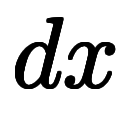



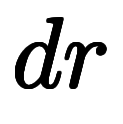
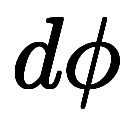 と書ける。
と書ける。
これは、 と
と 
 の積と見なせて、
の積と見なせて、
 が無次元のため、計量
が無次元のため、計量 で長さの次元を帳尻合わせしていると解釈できる。
で長さの次元を帳尻合わせしていると解釈できる。
ここで、変換行列から計量を分離すると、回転行列が残った式が得られる:
|



3次元極座標系に対しても同様に考察すると、
ヤコビアンを頑張って計算すれば、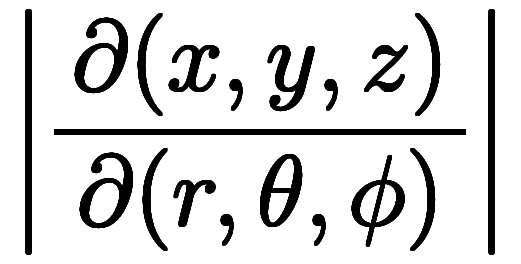

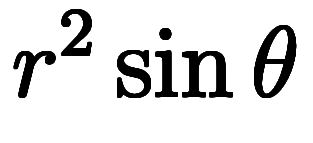 を得られて、
を得られて、
置換積分は

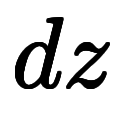




 と書ける。
と書ける。
類推から と
と
 と
と

 の積と見なせて、
の積と見なせて、
各次元の帳尻合わせと解釈できる。
特に 方向の計量は、
方向の計量は、 に依存するのみならず
に依存するのみならず にも依存するのが、
にも依存するのが、
同じ半径 の球面上における異なる
の球面上における異なる の円周が異なるためと解釈できる。
の円周が異なるためと解釈できる。
すると、2次元と同様に回転と計量を分離できる:
|
|
2列目から を、3列目から
を、3列目から
 を抜いた形になる。
を抜いた形になる。![\arrs[ccc]{ \sin\theta\, \cos\phi & \cos\theta\, \cos\phi & -\sin\phi \\ \sin\theta\, \sin\phi & \cos\theta\, \sin\phi & \cos\phi \\ \cos\theta & -\sin\theta & 0 \\ } $$ \arrs[ccc]{ \sin\theta\, \cos\phi & \cos\theta\, \cos\phi & -\sin\phi \\ \sin\theta\, \sin\phi & \cos\theta\, \sin\phi & \cos\phi \\ \cos\theta & -\sin\theta & 0 \\ } $$](./eq/eq-ni-9cbd95cddc799800e4199a1497465630.png) が3次元の回転を表すが、
が3次元の回転を表すが、
3次元回転が2回の2次元回転で合成できる事実は古くから知られていて、
3次元回転を2次元回転に分解したのが冒頭に示した因数分解式になる:
|
|
特に最初の
![\arrs[ccc]{ \cos\phi & -\sin\phi & 0 \\ \sin\phi & \cos\phi & 0 \\ 0 & 0 & 1 \\ } $$ \arrs[ccc]{ \cos\phi & -\sin\phi & 0 \\ \sin\phi & \cos\phi & 0 \\ 0 & 0 & 1 \\ } $$](./eq/eq-ni-e92cb84913e4eb02836598e9c47abc25.png) が、2次元回転の
が、2次元回転の
![\arrs[cc]{ \cos\phi & -\sin\phi \\ \sin\phi & \cos\phi \\ } $$ \arrs[cc]{ \cos\phi & -\sin\phi \\ \sin\phi & \cos\phi \\ } $$](./eq/eq-ni-1354f7dbbb23c2d9cd4a59b7ef1680dd.png) と全く同じである。
と全く同じである。
共に 軸と
軸と 軸の両方に直な方向を軸に、
軸の両方に直な方向を軸に、 軸を
軸を 軸に重ねる向きに回した回転を表す。
軸に重ねる向きに回した回転を表す。
簡単なため、これを「 軸を
軸を 軸に回した回転」と略す。
軸に回した回転」と略す。
2番目の行列である
![\arrs[ccc]{ \sin\theta & \cos\theta & 0 \\ 0 & 0 & 1 \\ \cos\theta & -\sin\theta & 0 \\ } $$ \arrs[ccc]{ \sin\theta & \cos\theta & 0 \\ 0 & 0 & 1 \\ \cos\theta & -\sin\theta & 0 \\ } $$](./eq/eq-ni-8e485f6b261eaa89bd8c27fd7621f239.png) は3行目を1行目に、1行目を2行目に置換すれば、
は3行目を1行目に、1行目を2行目に置換すれば、
これまた2次元の回転と同じ形になる。
つまり、 →
→ 、
、 →
→ に置換すれば、
に置換すれば、 を
を に重ねる回転を表す。
に重ねる回転を表す。
逆に言い方の方を置換すれば、「 軸を
軸を 軸に回した回転」になる。
軸に回した回転」になる。
すなわち、共に 軸と
軸と 軸の両方に直な方向を軸に、
軸の両方に直な方向を軸に、 軸を
軸を 軸に重ねる向きに回した回転を表す。
軸に重ねる向きに回した回転を表す。